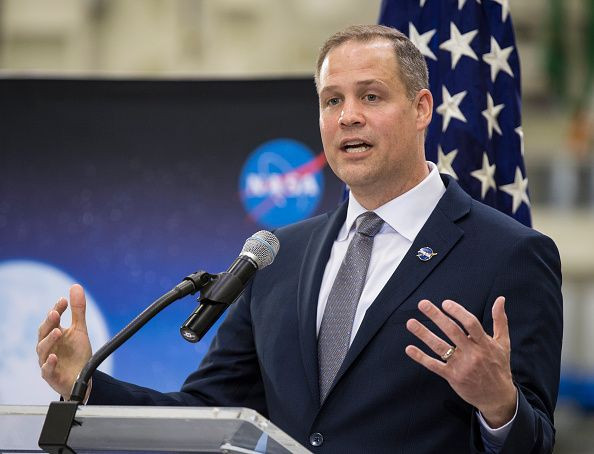NASA Says Women Could Lead The Pack To The Moon And Mars

NASA Administrator Jim Bridenstine hinted at the possibility of a woman going to the Moon and possibly be the first person to make it to Mars, as well.
Bridenstine answered a question on Twitter while he was on the science and technology radio show "Science Friday." He teased that a woman may be the first person to land on Mars. Another person also asked whether there is a possibility for a woman to be included in NASA's next trip to the Moon and Bridenstine responded "absolutely."
"NASA is committed to making sure we have a broad and diverse set of talent and we're looking forward to the first woman on the moon," Bridenstine said.
NASA did not reveal names, but the administrator did say that these are great times. It was in 1978 when six women first joined the agency. At present, around 34 percent of active astronauts at NASA are women.
This is not the only news at NASA concerning women. The agency will also make history later this month by having its first all-female spacewalk. Anne McClain and Christina Koch, both part of the 2013 astronaut class, are set to do the spacewalk. Mclain and Koch's NASA batch had more than 6,100 applicants. NASA also added that half of its recent class of flight directors are women.
However, the journey to the Moon could happen sooner than the one on Mars, as the Trump administration wants the space agency to focus on putting people on the Moon first. Of the recently proposed budget of the Trump administration, around $600 million more will be allocated to the development of an outpost high on the Moon. The project will kick off the development of landers that will help astronauts reach the surface of the Moon again.
Bridenstine said that the agency's budget is "strong." NASA could get as much as $21 billion despite budget cuts across the federal government. The increase in funding, more than the previous one, is also part of the ongoing space race that many countries seem to be joining now.
Recently, the Japan Aerospace Exploration Agency (JAXA) teamed up with Toyota to develop a rover for the Moon. The rover will eventually meet Japan's human expedition in the future. China has also allocated $8 billion in annual budget as part of this arms race.
© Copyright IBTimes 2025. All rights reserved.





















